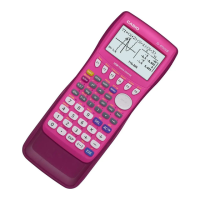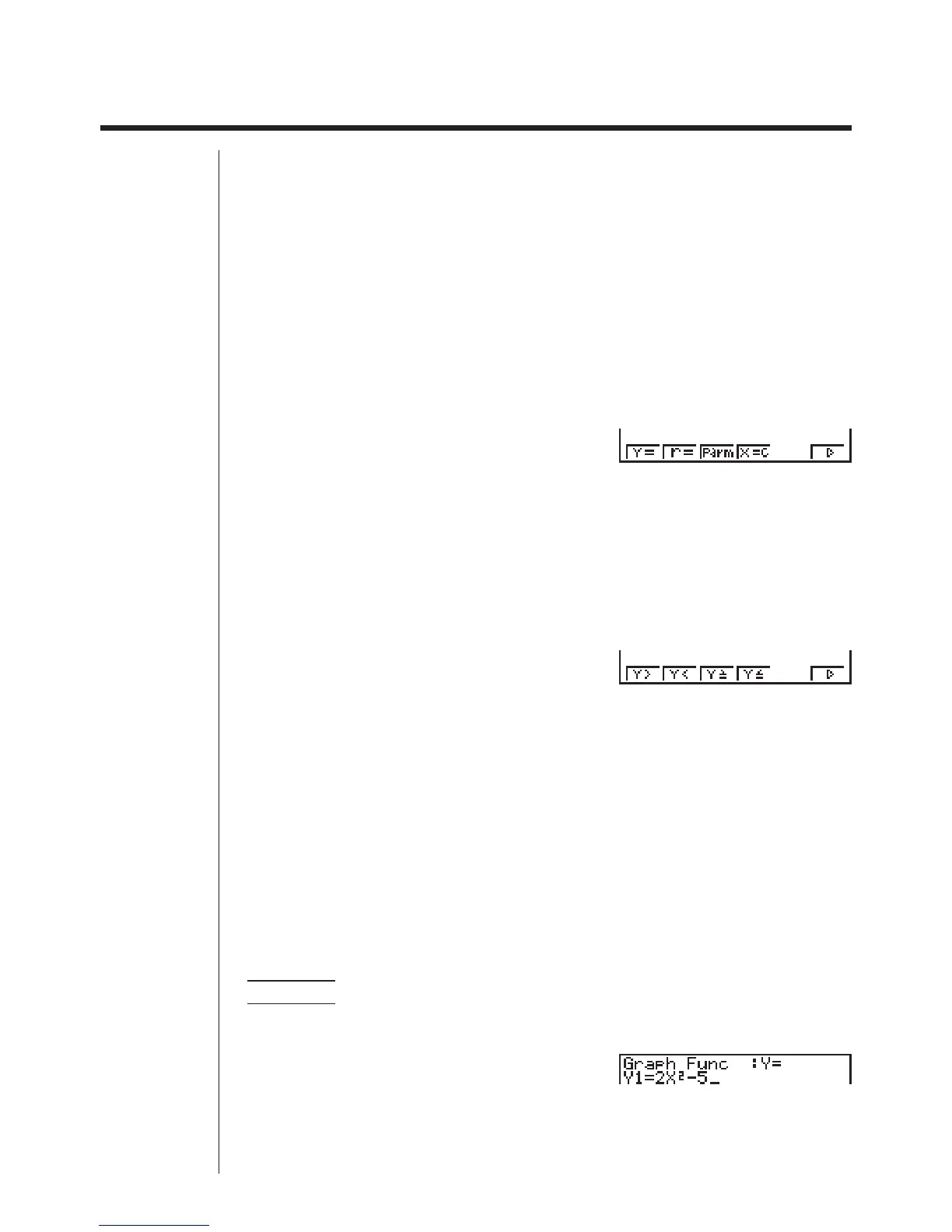132
8-3 Graph Function Operations
You can store up to 20 functions in memory. Functions in memory can be edited,
recalled, and graphed. The types of functions that can be stored in memory are:
rectangular coordinate functions, polar coordinate functions, parametric functions,
inequalities, and X = constant expressions.
kk
kk
k Specifying the Graph Type
Before you can store a graph function in memory, you must first specify its graph
type.
1. While the Graph Function Menu is on the display, press 3 (TYPE) to display a
Graph Type Menu.
3(TYPE)
1 (Y =) ......... Rectangular coordinate
graph
2 (
r =) .......... Polar coordinate graph
3 (Parm) ...... Parametric graph
4 (X = c) ...... X = constant graph
6 (g) ........... Next menu
6(g)
1 (Y >) ......... Y > f
(x) inequality
2 (Y <) ......... Y < f
(x) inequality
3 (Y $) ......... Y > f
(x) inequality
4 (Y %) ......... Y <
f
(x) inequality
6 (g) ........... Previous menu
2. Press the function key that corresponds to the graph type you want to specify.
kk
kk
k Storing Graph Functions
uu
uu
uTo store a rectangular coordinate function (Y =)
Example To store the following expression in memory area Y1 :
y = 2 x
2
– 5
3(TYPE)1(Y =)
(Specifies rectangular coordinate
expression.)
cvx-f
(Inputs expression.)
12345 6
12345 6

